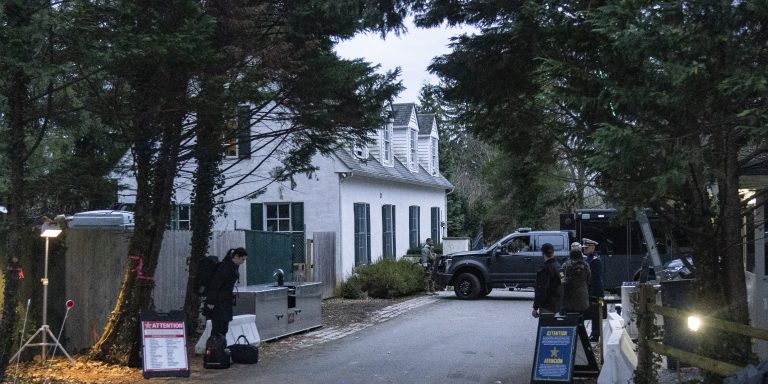INTELBRIEF
January 26, 2023
IntelBrief: Sorry, That’s Classified

Bottom Line Up Front:
- The Federal Bureau of Investigation (FBI) discovered additional classified documents at a residence belonging to U.S. President Joseph Biden during a January 20 search.
- The search is part of an ongoing investigation into the president’s possible improper storage or handing of classified materials.
- A lawyer for former U.S. Vice President Mike Pence discovered classified documents at Pence’s home earlier this month.
- Former intelligence officials say government documents are commonly discovered outside protected spaces, but most cases are deemed unintentional and not prosecuted.
The Federal Bureau of Investigation (FBI) discovered additional classified documents at a residence in Wilmington, Delaware belonging to U.S. President Joseph Biden during a January 20 search. The FBI was allowed into the residence voluntarily and did not require a search warrant. The search comes after numerous White House disclosures of classified document discoveries at the President’s home and private office by Biden’s lawyers, and assurances that these searches had been complete and thorough. Approximately 20 classified documents had already been reported, at least some of which were classified as top-secret. The FBI search was part of an ongoing investigation into President Biden’s improper storage or handling of classified materials
The investigation occurred alongside another ongoing investigation by the U.S. Department of Justice into classified documents seized from former President Donald Trump’s personal residence in Florida. Biden’s choice to cooperate with investigators offers some contrast with Trump’s refusal, which led to an unprecedented raid on a former president’s home, and the seizure of more than 300 classified documents, which included information on an Iranian missile program and intelligence efforts targeting China. Another striking contrast was the former president’s intentional stockpiling of classified material after government requests that the documents be returned.
U.S. Attorney General Merrick B. Garland has appointed special counsels to investigate the actions of both Biden and Trump. Following the latest Biden discovery, it was revealed this week that about a dozen classified documents were found at former U.S. Vice President Mike Pence’s home earlier this month by Pence’s lawyers. U.S. Representative Don Bacon has called for a third special counsel to investigate the situation and echoed bipartisan critiques of how U.S. senior leaders overall handle classified documents.
According to former intelligence officials, with millions of classified documents generated every year, it is common for government documents to fall outside of protected spaces, though most cases are deemed unintentional and are not prosecuted.
There are only three official classifications in the U.S. government as they relate to information – Top Secret, Secret, and Confidential – ranked according to the potential national security harm done by the information’s unauthorized leak. There are additional restrictions within these classification levels, such as NOFORN (not to be shared with foreign governments) or ORCON (Originator Control over access).
Top Secret is reserved for information whose revelation could reasonably be expected to could cause “exceptionally grave damage to the national security,” such as intelligence reports from a foreign asset on their country’s military intentions, or the operational report on how that information was obtained. Information classified as top secret can be further protected by compartmentalizing it to ensure only those with a ‘need to know’ have access to the information. This is referred to as Sensitive Compartmentalized Information (SCI) or information protected by a Special Access Program (SAP). America’s most sensitive secrets are maintained at this level of classification.
Secret is reserved for information whose revelation could reasonably be expected to cause “serious damage,” such as the location of military equipment.
Confidential is reserved for information whose revelation could reasonably be expected to cause “damage to the national security,” which could be almost anything.
These potential harm assessments are intentionally broad, and there is a tendency to over classify some materials, even though the Executive Order (EO) authorizing and detailing classification methods states that a document should be classified “at the lower level” in the event of “significant doubt” over its appropriate classification. Despite this guidance, many of the rank and file members of the U.S. government air on the side of caution when classifying documents so as to avoid spillage, or inadvertently mishandling information that requires protecting. Overclassification is multi-causal and can result from time constraints, carelessness, and or fear of punishment for mistakenly mislabeling sensitive information below the appropriate classification level. This same EO says that only information that “could reasonably be expected to cause identifiable or describable damage to the national security” should qualify for classification, broadly described as information relating to:
- Military and/or weapons (including weapons of mass destruction)
- Intelligence
- Nuclear safeguards
- Foreign governments and/or U.S. foreign relations
- Scientific, technological, and/or economic issues with national security relevance
- “Vulnerabilities or capabilities of systems, installations, infrastructures, projects, plans, or protection services relating to the national security”
However, the order specifically forbids the inappropriate use of classification to cover up government inefficiencies, errors or illegal activities; “prevent embarrassment”; “restrain competition”; or to otherwise prevent the sharing of information that does not carry national security implications.
Over-classification is seen as a problem in the U.S., as is the improper handling of properly classified, extremely important information. Once material is properly classified, it must be handled in a manner prescribed by its classification, ranging from locks to guards to electronic surveillance countermeasures. Top Secret material, for example, can’t be viewed or discussed outside of a sensitive compartmented information facility (SCIF). A SCIF can be a room inside a building, such as in the Hart Senate Office Building where the Senate Select Committee on Intelligence holds meetings, or a building itself, such as most of the CIA headquarters. The current focus on classified materials could serve as an opportunity to reexamine the classification process and ensure that material that truly requires classification be properly handled.